For much of its first 100 years, the University of Western Ontario, in London, was a relatively small outpost of Canada’s public university system. Founded in 1878 and situated at the fork of the Thames and Medway Rivers, the campus consisted almost entirely of Collegiate Gothic halls of modest scale. But the D.B. Weldon Library—designed in the Brutalist style by renowned Australian architect John Andrews, with local practice Murphy, Schuller, Green and Martin as part of an ambitious expansion of the campus—marked a dramatic departure from that existing character.
Andrews, born in Sydney and mentored by José Luis Sert at Harvard’s Graduate School of Design, would go on to design the GSD’s Gund Hall (1972), Toronto’s CN Tower (1976), and many other projects in both North America and Australia.
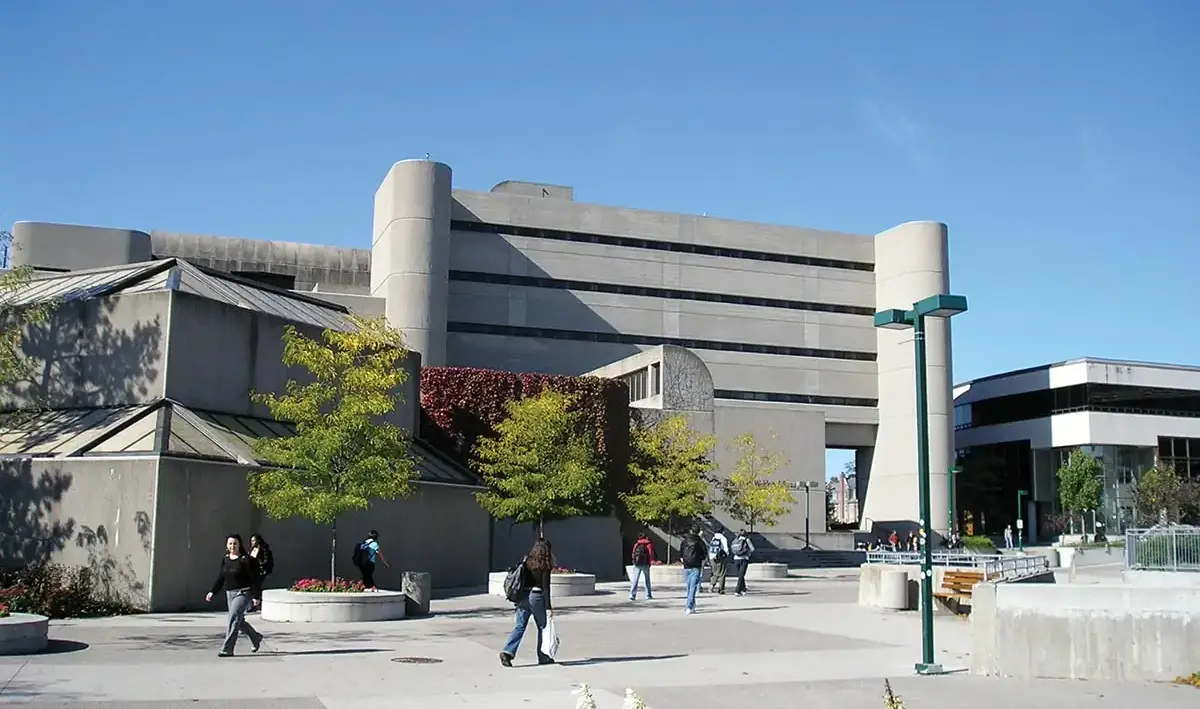
The library bears an imposing presence and is sectionally complex. Photo © Western Libraries
Though the fortresslike edifice, with its monumental central atrium, received much acclaim when it opened its doors in 1972, over the succeeding half century, numerous ill-conceived design interventions, as well as the evolution of pedagogical demands on academic libraries, rendered Weldon functionally and aesthetically outdated. That was until earlier this year, when the Toronto studio of Perkins&Will wrapped up the first part of a multi-phase revitalization project.
For Perkins&Will, the goal is, when working with such structures, to, in effect, convince the client that the performance flaws can be reversed without fundamentally altering the “bones” of the original design.
The 220,000-square-foot behemoth rises six stories, with a terraced form that reduces the impact of its scale on the otherwise low-slung campus. The building’s almost entirely poured-in-place concrete structure has stairs and mechanical shafts housed within oblong towers at the exterior corners and post-tensioned floor slabs supported by precast single tees. Their load, in turn, is transferred to perimeter beams at the edge of the floor plates, which provide for the library’s largely column-free interior. The double-height atrium, which contained a large portion of the library’s collection and later evolved into a study space, is topped by a waffle slab ceiling.
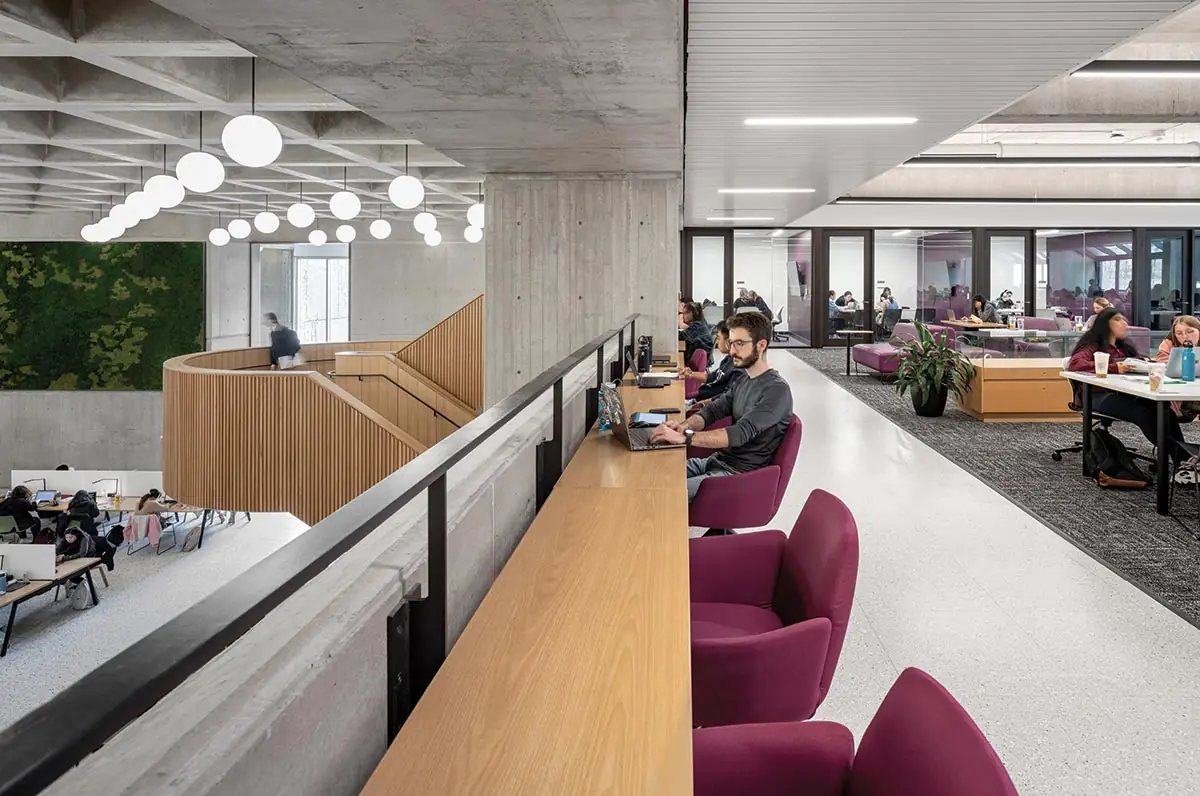
1
Study spaces were revamped (1 & 2). Photos © Scott Norsworthy
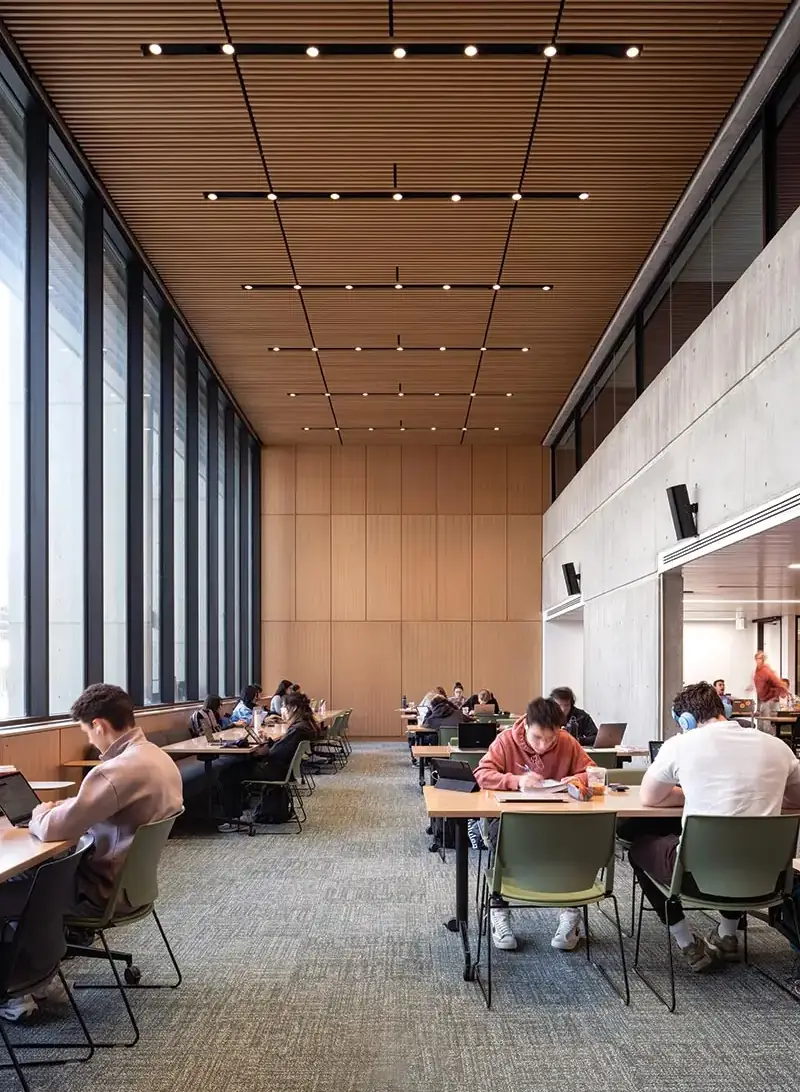
2
The finish of the concrete varies across the library; interior spaces have a smooth wood grain formed by plywood and timber boards, as do the great exterior horizontal spans that sandwich the library’s ribbon windows. Other exterior elements, like the towers, are striated and sandblasted, in a treatment similar to bush-hammered, or “corduroy,” concrete. The resulting array of surfaces demarcates the building program and visually breaks up the otherwise monolithic mass.
Andrews envisioned Weldon as something of a hub within the university’s campus; however, at the start of the renovation, it resembled anything but. It was, for all intents and purposes, a concrete warehouse with enfilades of cubicles and partitions, minimal natural light, and inadequate building climate controls.
The first step for this phase of the project, which focused only on the interior, was to declutter; those cubicles and other barriers, as well as a reference desk that had gradually subsumed an ever-larger share of the atrium’s floor space, were removed. Linoleum flooring was ripped out and replaced with grayish-white porcelain tiles that harmonize with both the color and rectilinearity of the existing concrete. Below grade, in an existing basement formerly used to warehouse microfiche, the team compressed the library’s collection with a motorized high-density storage system. The move freed up floor space above for study rooms, collaborative spaces, and administrative offices.
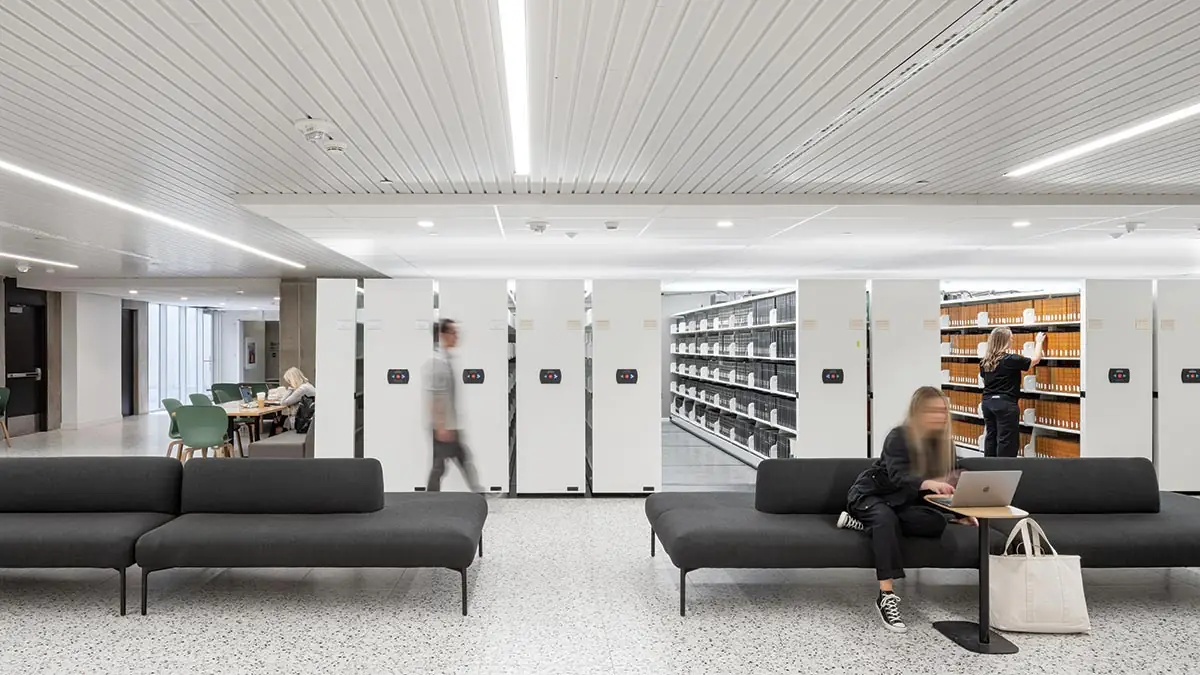
Stacks are consolidated in the basement. Photo © Scott Norsworthy
Perkins&Will also reintroduced a curved stair linking the atrium to the mezzanine that, at some point, had been demolished. The stair, formerly exposed concrete, is now clad in white oak, matching new millwork found throughout the library, which replaces a prior hodgepodge of dark-stained cherry finishes. Bright upholstered furniture adds color to the otherwise muted interior.
For lighting, the team suspended an array of orb-shaped pendants, chosen for their soft and diffused light, within the coffers of the atrium’s ceiling, creating much-needed contrast to the heaviness of the concrete without detracting from the existing details. Electrical conduits were painted to match the exact color of the concrete, and carefully routed, to be as inconspicuous as possible. Larger fixtures, custom made by the same manufacturer, are located above key nodes, such as the information desk.
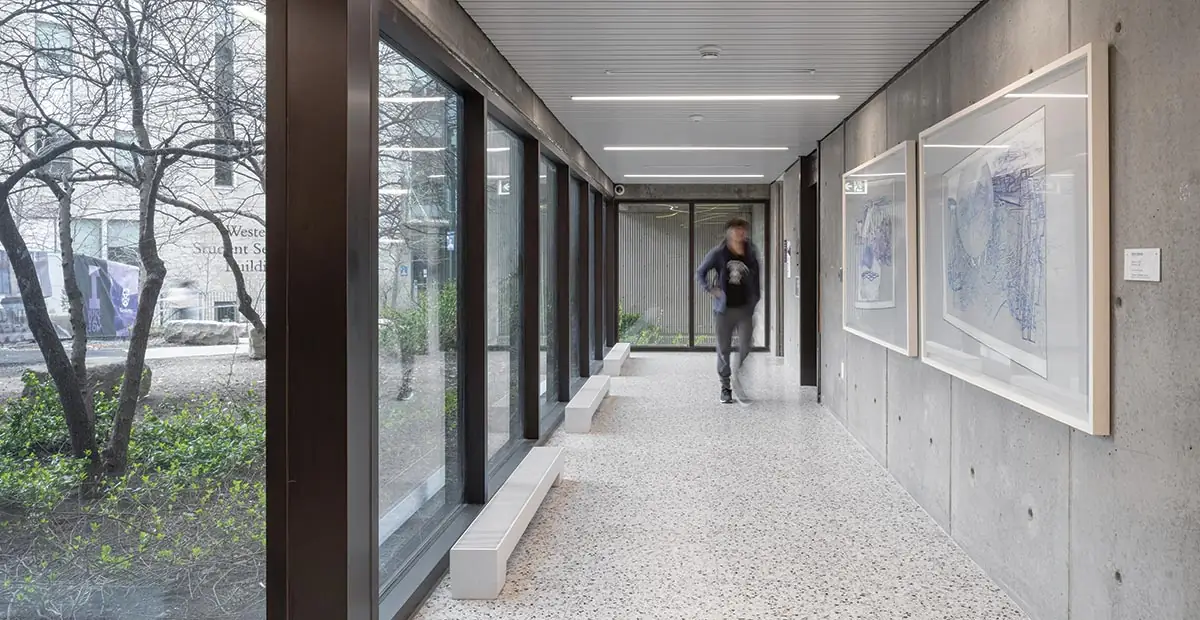
3
The renovation improved circulation and office space (3 & 4). Photos © Scott Norsworthy
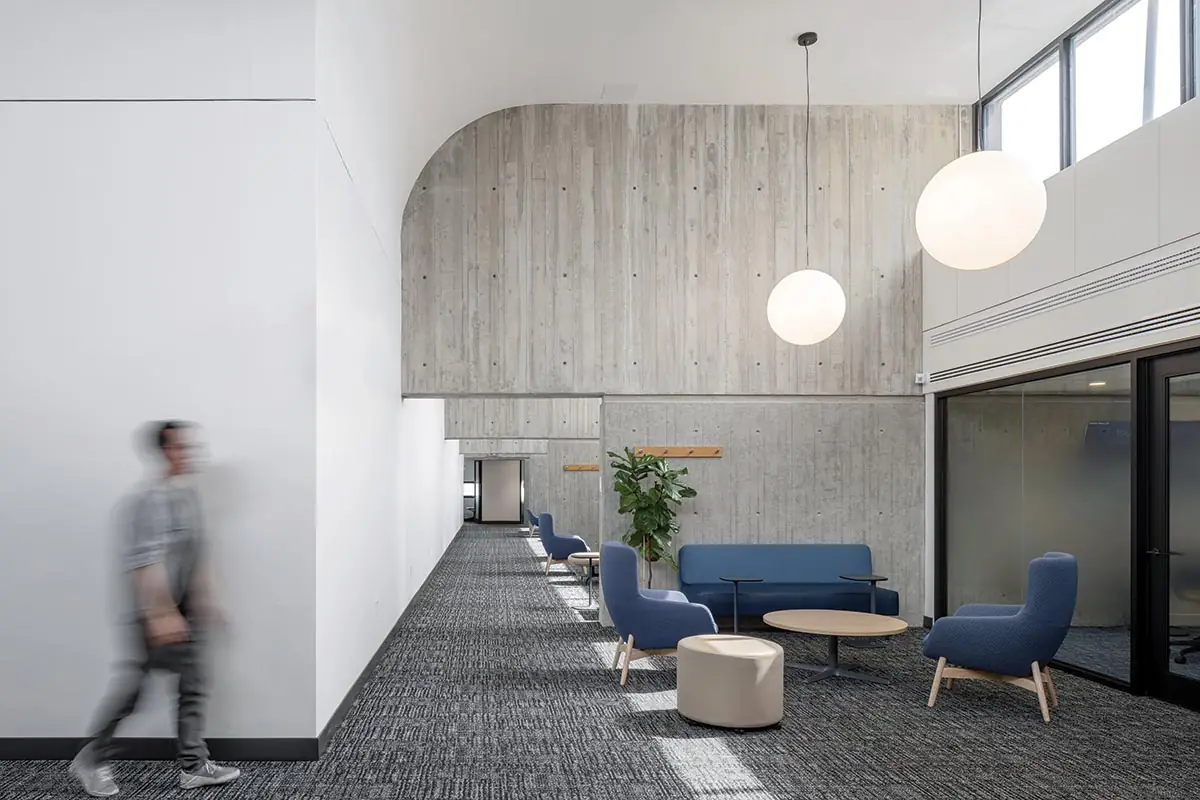
4
The project included a comprehensive upgrade of the building’s aging mechanical equipment. The original climate-control system consisted of four zones, that, considering the scale of the building, left users overheated or cold, depending on their location within the library. The architects, in collaboration with local engineer Chorley+Bisset, adopted a more granular approach to provide control within smaller zones. Additionally, the architects and engineers threaded a new service spine through the concrete structure to provide enhanced electrical, IT, and AV services for existing and anticipated needs. All in all, the infrastructural improvements are expected to reduce energy use by 30 percent.
The architect and client are currently finalizing the scope and budget for the second phase of the project, which includes the renovation of study and collection areas, integrating new teaching, learning, and research spaces, and programmatic support for evolving staff operations. But with the first phase completed, Perkins&Will has already succeeded in transforming an undervalued and outmoded building into a relevant cornerstone of the University of Western Ontario’s campus.
Click plans to enlarge
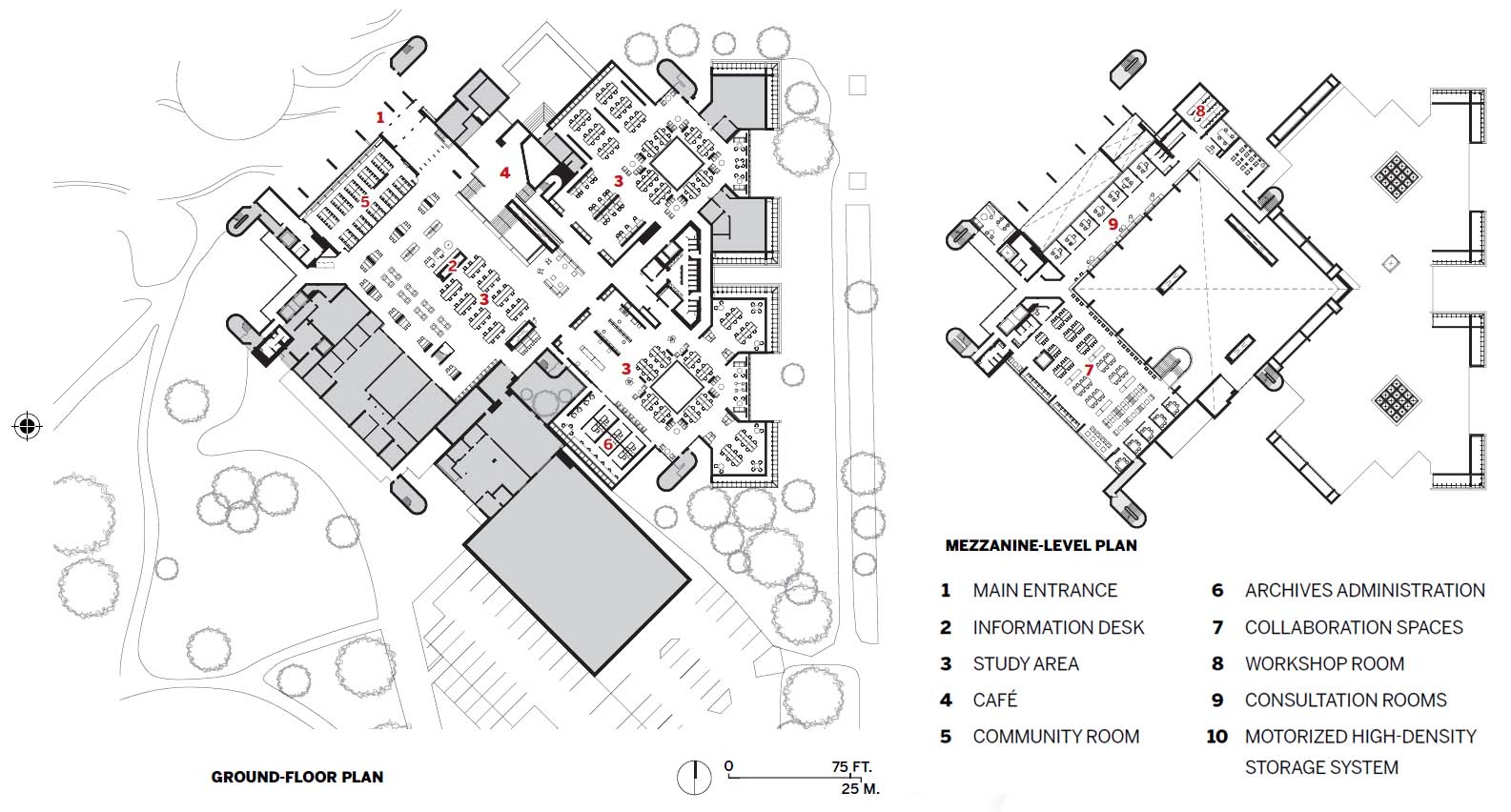
Click section to enlarge
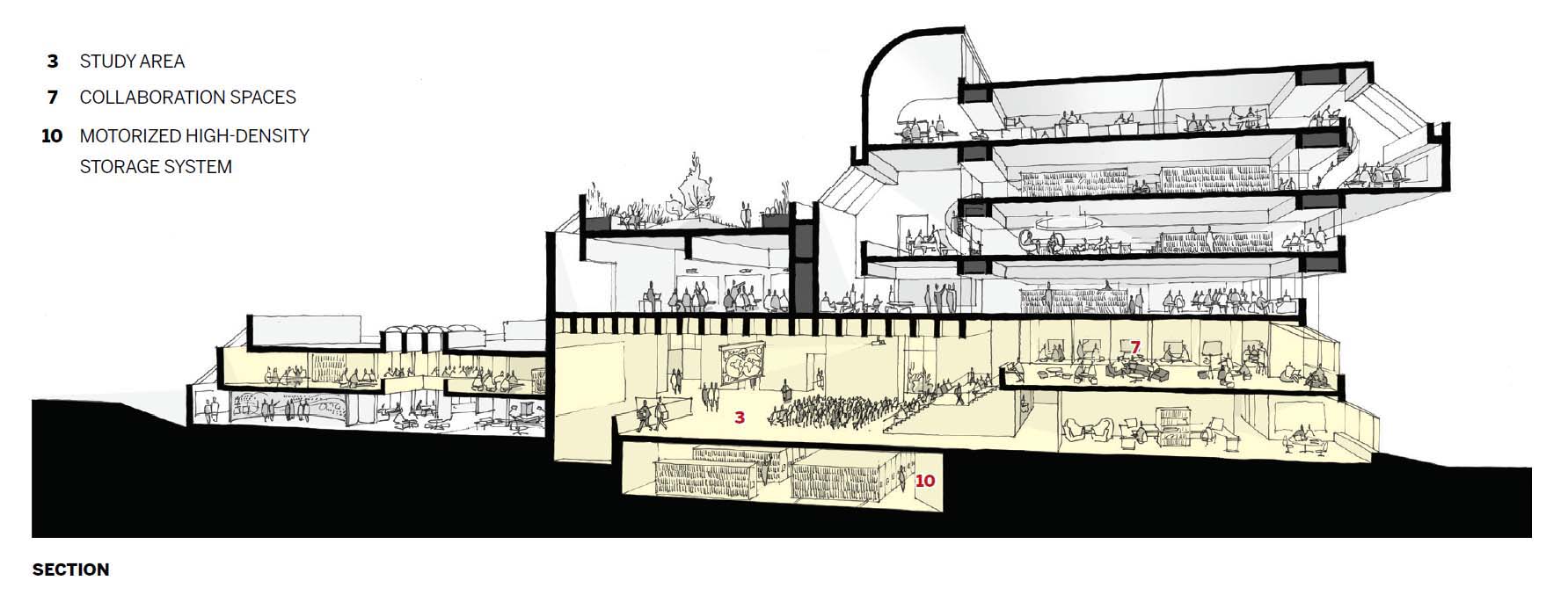
Credits
Architect:
Perkins&Will — Andrew Frontini, managing principal; Jon Loewen, associate principal; Martha del Junco, interior design lead; Alan Mortsch, project manager
Associate Architect:
Cornerstone Architecture
Engineers:
Vanboxmeer & Stranges (structural); Chorley+Bisset (m/e/p)
General Contractor:
Tonda Construction
Client:
University of Western Ontario
Size:
80,000 square feet (Phase 1)
Cost:
Withheld
Completion Date:
October 2022
Sources
Acoustical Ceilings:
Armstrong Ceilings
Demountable Partitions:
Kawneer/Glass Canada
Cabinetwork and Custom Woodwork:
Archmill House
Paints and Stains:
Dulux
Interior Surfacing:
Centura, Fenix NTM
Resilient Flooring:
Khars, Upo Flooring
Carpet:
Tarkett
Furniture:
Haworth, Keilhauer, Teknion
Pendants:
Camman Lighting
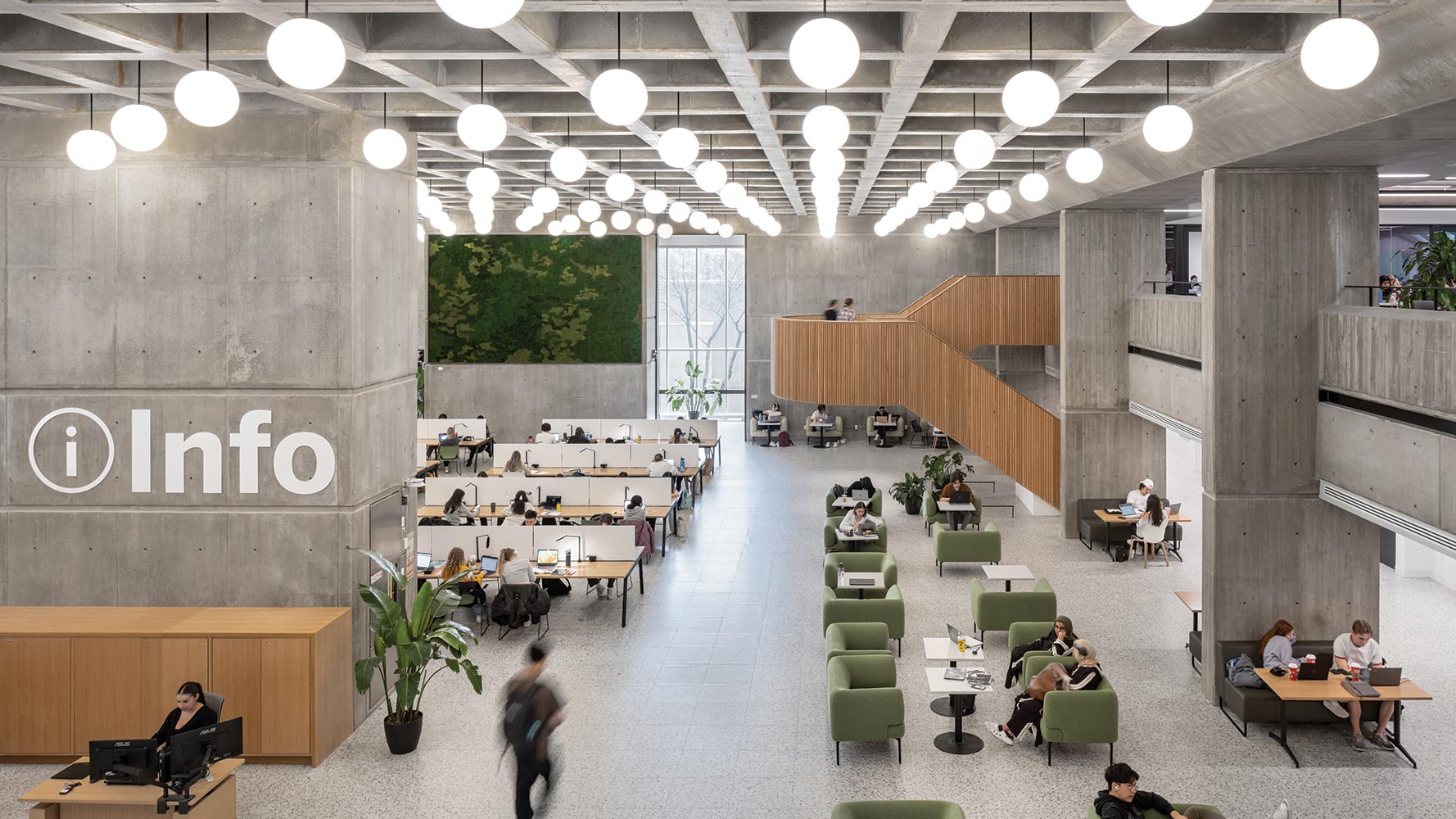


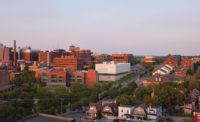
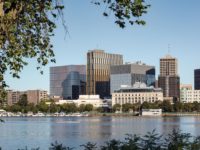
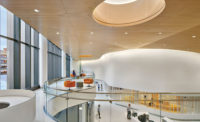
Post a comment to this article
Report Abusive Comment